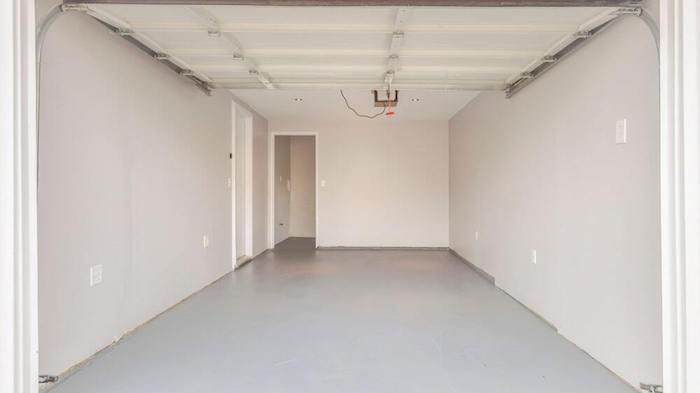The garage is often an overlooked space for home improvement projects. However, your garage can become a functional and visually appealing part of your home with the right upgrades. One such upgrade is epoxy flooring, a durable and customizable solution that can transform your garage into a stylish and practical space.
This guide will explore the benefits of epoxy garage floors, the installation process, maintenance tips, and the various design options available to help you create your dream garage.
Table of Contents
Benefits of Epoxy Garage Floors
Durability: Epoxy flooring is known for its exceptional durability, making it an ideal choice for high-traffic areas like the garage. It can withstand heavy loads, resist chipping, staining, and cracking, and is highly resistant to chemicals, oils, and other common garage substances.
Easy to Clean: The seamless and non-porous nature of epoxy flooring makes it incredibly easy to clean. Spills and stains can be easily wiped away with a cloth or mopped up, making maintenance a breeze. Unlike traditional concrete floors, epoxy does not absorb liquids, preventing them from seeping into the surface and causing long-term damage.
Enhanced Safety: Epoxy coatings can improve the safety of your garage floor by providing a slip-resistant surface. Various texture options are available, such as a non-slip additive or a full-flake system, which increases traction and reduces the risk of accidents.
Aesthetically Pleasing: Epoxy garage floors offer a wide range of design options, allowing you to customize your space to suit your style and preferences. With a variety of colors, finishes, and decorative elements like metallic flakes or quartz crystals, you can create a visually stunning garage that complements the rest of your home.
Installation Process
Installing epoxy flooring in your garage typically involves the following steps:
Surface Preparation: The key to a successful epoxy installation is proper surface preparation. The garage floor needs to be thoroughly cleaned to remove any dirt, oil, grease, or existing coatings. Any cracks or imperfections should be repaired, and the surface should be etched to ensure proper adhesion.
Primer Application: Once the surface is clean and prepared, a primer coat is applied. The primer helps the epoxy adhere to the concrete and ensures a strong bond. It also helps to prevent moisture-related issues and enhances the longevity of the coating.
Epoxy Application: After the primer has dried, the epoxy coating is applied. This is typically done using a roller or a brush. Depending on the desired thickness and design, multiple coats may be applied. Each coat should be allowed to dry and cure before proceeding to the next step.
Optional Decorative Elements: If you wish to incorporate decorative elements like metallic flakes or quartz crystals, they can be added during the epoxy application process. These elements can be scattered across the wet epoxy, creating a unique and eye-catching design.
Topcoat Application: To further enhance the durability and longevity of the epoxy floor, a clear topcoat is applied. The topcoat acts as a protective layer, shielding the epoxy from UV rays, abrasion, and chemical damage. It also provides a glossy or matte finish, depending on your preference.
Maintenance Tips
To keep your epoxy garage floor in optimal condition, consider the following maintenance tips:
Regular Cleaning: Sweep or dust mop your epoxy floor regularly to remove dirt and debris. For more thorough cleaning, use a mild detergent mixed with warm water and mop the floor. Avoid using abrasive cleaners or solvents, as they can damage the epoxy finish.
Prompt Spill Cleanup: While epoxy is highly resistant to stains, it’s still important to clean up spills as soon as possible to prevent potential discoloration. Wipe up oil, grease, or chemical spills with a cloth or paper towel, and clean the area with a mild detergent.
Avoid Scratching: While epoxy floors are durable, excessive scratching from heavy furniture or sharp objects can cause damage. Place protective mats or pads under heavy equipment or furniture to prevent scratches and dents.
Avoid Hot Tire Marks: Hot tire marks can occur when hot rubber from car tires comes into contact with the epoxy surface. To prevent this, avoid spinning your tires and park your vehicle on a protective mat or pad.
Design Options
Epoxy flooring offers numerous design options to suit your personal taste and style:
Solid Colors: Choose from a wide range of solid colors to create a sleek and modern look for your garage. Popular choices include shades of gray, blue, or tan.
Metallic Finishes: Metallic epoxy coatings create a stunning three-dimensional effect with a high-gloss finish. These coatings use metallic pigments to achieve a marbled or swirled appearance.
Quartz or Flake Systems: For a textured and decorative look, consider quartz or flake systems. Quartz crystals or vinyl flakes are broadcasted onto the wet epoxy, adding depth and visual interest to the floor.
Custom Designs: Epoxy can be customized to incorporate logos, patterns, or a unique color combination. This allows you to create a genuinely one-of-a-kind garage floor that reflects your personality.
Transforming your garage with epoxy flooring is an excellent way to enhance its functionality, durability, and visual appeal. From its durability and easy maintenance to the vast design options available, epoxy flooring offers a host of benefits that can turn your garage into an inviting and versatile space.
Whether you’re looking for a modern, sleek look or a more decorative and unique design, epoxy garage floors provide a versatile solution that will leave you with a transformed garage you’ll be proud to showcase.
Key Takeaways
- Epoxy garage floors offer numerous benefits, including durability, easy cleaning, enhanced safety, and aesthetic appeal.
- The installation process involves surface preparation, primer application, epoxy coating, optional decorative elements, and a top coat.
- To maintain epoxy garage floors, regular cleaning, and prompt spill cleanup are essential.
- Design options include solid colors, metallic finishes, quartz or flake systems, and custom designs.
- Epoxy flooring can transform your garage into a functional, visually appealing space that complements your home’s style and adds value to your property.

